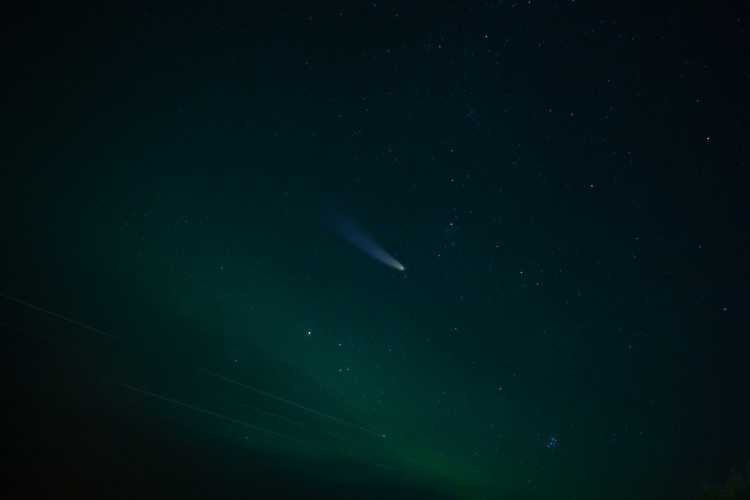The largest identified asteroid of 2021, asteroid 2001 FO32, will pass by Earth on March 21. The pace rock is measured to be about .6 miles in diameter, not quite as long as the Golden Gate Bridge, but similar in length.
While there is no risk of impact, the asteroid is also one of the fastest space rocks estimated to pass past Earth. It's traveling at around 76,980 miles per hour relative to Earth. In contrast, Earth travels about 18 miles (30 km) per second around the sun. Since 2001 FO32 has periodically passed near Earth, and it has been identified as a potentially hazardous asteroid. Its orbit is well known, and there is no chance of impact.
An interesting feature of asteroids is that researchers using backyard telescopes can spot them as apparently slow-moving "stars." It normally takes at least 5 to 10 minutes for backyard telescope users to track the motion of space rock in front of their starfield. Yet the 2001 FO32 asteroid would sweep past Earth at such a quick speed that, when it is nearest, astronomers using 8′′ or larger telescopes will be able to track its motion - its drift in front of the stars - in real-time.
Asteroid 2001 FO32 is likely to be too faint to be seen by the naked eye. It would be visible to observers using 8′′ or larger telescopes. You must point your telescope at the right place in the sky, at the right time. You will also want to search Stellarium online or TheSkyLive for more information on observing.
The thing is, the asteroid is relatively deep in the southern sky. As the 2001 FO32 asteroid passes through Earth, astronomers using telescopes might attempt to locate it as it glides through the southern constellations of Scorpius and Sagittarius. For observers in the southern U.S., the asteroid will be low in the atmosphere, over the southern horizon (about 20 degrees or below), just before dawn on March 21, 2021. Observers at lower latitudes and in the southern hemisphere would be ideally equipped to take a look at the telescope.
After traveling around Earth in March 2021, the next encounter of this asteroid with our planet will take place in 31 years, on March 22, 2052. However, the 2021 approach will be nearest to Earth for the next 200 years, for which its orbit has been determined.
Asteroid 2001 FO32 was discovered on 23 March 2001 by the Lincoln Near-Earth Asteroid Research (LINEAR) near Socorro, New Mexico.




